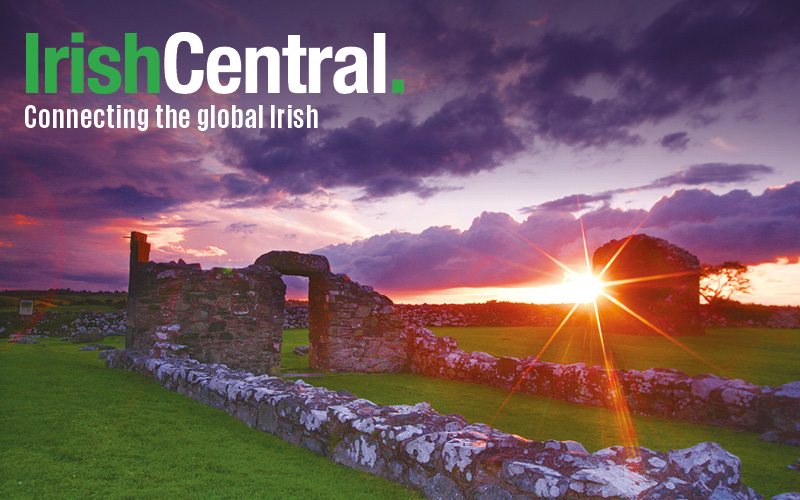A leading Irish historian has urged the government to snap up 1916 Rising memorabilia at a series of forthcoming auctions.
Professor Diarmuid Ferriter has been enlisted by the same government to help plan the centenary celebrations of the Rising.
He has now written an op-ed piece for the Irish Times criticising the government’s lack of movement on buying many of the articles now set to go on sale at a number of ‘independence sales’ in Irish auction houses.
Ferriter wrote that the auction houses are actively drumming up business selling Irish historical memorabilia from the 1916-1923 period.
An auction at Whyte’s next month includes an Irish Tricolour that flew over one of the buildings occupied by the Irish Volunteers during the 1916 Rising.
Ferriter writes: “This flag was sold at auction in Dublin in 2007 for €20,000 ($25,000) by a private Irish collector and is expected to reach up to €50,000 ($63,000).
“There is an obvious home for this flag, and it’s not with a private collector, investor or speculator; it belongs in the National Museum in Collins Barracks.
“There is something unseemly about this kind of historical artefact being traded in this way, but it is equally a pity that those who have the wealth to buy them do not see fit to donate them to the State, thereby bringing significant pieces of our heritage into public ownership.
“After all, the National Museum exists to ‘collect, preserve, promote and exhibit’ this heritage. But how can national cultural institutions compete with wealthy private collectors and in any case, why should they have to?”
Cutbacks in government spending haven’t helped Ferriter’s argument.
He added: “The disproportionate cuts in State aid to institutions such as the National Library and National Museum of roughly 40 per cent in the past five years have been well documented, but even before cuts linked to the recession, there was a curious lack of interest by the State in funding these institutions to buy War of Independence material.
“In 2006, then minister for arts John O’Donoghue suggested the State could make funds available for material of ‘exceptional’ importance, but he was vague on specifics and little was done to stop valuable material remaining in private hands or leaving the State.
“At that time, the director of the National Museum, Dr Pat Wallace, and Taoiseach (PM) Bertie Ahern attended a pre-auction viewing of War of Independence material being sold at joint auction.
“Wallace said, rather ruefully, the museum would be bidding ‘on some of the smaller items’.
“But the main media interest during that Celtic Tiger era was on the price of 1916 proclamations. One had been sold in 2004 for €390,000 ($500,000) and they were being written about as investments.
“Clearly the recession affected on their value; another was sold for €240,000 ($300,000) in 2010.
“At the time of these auctions, ministers said government did not have to concern itself as there were already three 1916 proclamations in State ownership.
“But these ‘independence sales’ are about a lot more than proclamations or Tricolours.”
Ferriter continued: “Much is made of the rareness of other documents, and those described in Whyte’s current catalogue as of ‘immense historical importance’.
“They include the Castle document of April 1916, a forged document that detailed plans for suppressing the Volunteers and the arrest or detention of hundreds of nationalists, produced to persuade the leadership of the Volunteers that ‘defensive’ action was justified and to support the planned Rising.
“It now has an estimated value of between €500 ($625) and €700 ($900).”
Many medals from the Rising and the subsequent War of Independence are to go on sale in the coming months according to Ferriter.
He writes: “The current Whyte’s catalogue is also littered with 1916 service and War of Independence service medals, awarded in 1941 and 1942 to honour veterans.
“It is sad to see such items doing the rounds of auction houses; a service medal might set you back €500 ($625) but why should you have it if neither you nor your family have any connection to it?
“Surely that amounts to a debasement of these medals and what they represent?
“And what of the items on sale that should be in the National Archives, as they were generated by the Dáil Éireann administration from 1919 to 1921?
“There is material from the departments of local government and finance of that period, typed on official Dáil Éireann paper.
“Saddest and most ironic of all is the sale, with an estimated price of between €5,000 ($6,250) and €7,000 ($9,000), of the 1916 service medal of William Partridge, awarded posthumously in a presentation box accompanied by a slip of paper with the words ‘with the compliments of the President of Ireland’.
“Partridge was a militant revolutionary socialist and a captain in the Irish Citizen Army who fought in 1916; he was imprisoned afterwards and died the following year.
“He had also been one of the foremost figures of the 1913 Lockout. A century later, his medal is locked in an auction house, waiting to be sold to the highest bidder.
“It, and much more like it, should be released and placed in public ownership by a patriotic philanthropist; or, indeed, could be bought by Heather Humphreys and sent to the National Museum ‘with the compliments of the Department of Arts, Heritage and the Gaeltacht’.”




Comments